Zhiyuan You
RadarQA: Multi-modal Quality Analysis of Weather Radar Forecasts
Aug 17, 2025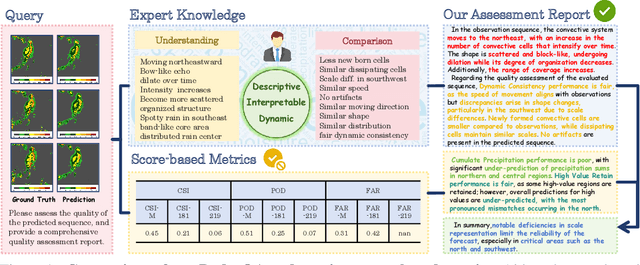
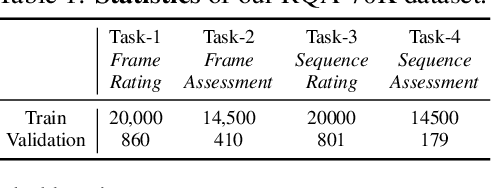
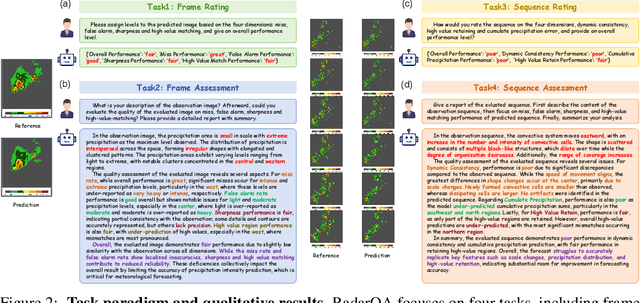

Abstract:Quality analysis of weather forecasts is an essential topic in meteorology. Although traditional score-based evaluation metrics can quantify certain forecast errors, they are still far from meteorological experts in terms of descriptive capability, interpretability, and understanding of dynamic evolution. With the rapid development of Multi-modal Large Language Models (MLLMs), these models become potential tools to overcome the above challenges. In this work, we introduce an MLLM-based weather forecast analysis method, RadarQA, integrating key physical attributes with detailed assessment reports. We introduce a novel and comprehensive task paradigm for multi-modal quality analysis, encompassing both single frame and sequence, under both rating and assessment scenarios. To support training and benchmarking, we design a hybrid annotation pipeline that combines human expert labeling with automated heuristics. With such an annotation method, we construct RQA-70K, a large-scale dataset with varying difficulty levels for radar forecast quality evaluation. We further design a multi-stage training strategy that iteratively improves model performance at each stage. Extensive experiments show that RadarQA outperforms existing general MLLMs across all evaluation settings, highlighting its potential for advancing quality analysis in weather prediction.
Harnessing Diffusion-Yielded Score Priors for Image Restoration
Jul 28, 2025Abstract:Deep image restoration models aim to learn a mapping from degraded image space to natural image space. However, they face several critical challenges: removing degradation, generating realistic details, and ensuring pixel-level consistency. Over time, three major classes of methods have emerged, including MSE-based, GAN-based, and diffusion-based methods. However, they fail to achieve a good balance between restoration quality, fidelity, and speed. We propose a novel method, HYPIR, to address these challenges. Our solution pipeline is straightforward: it involves initializing the image restoration model with a pre-trained diffusion model and then fine-tuning it with adversarial training. This approach does not rely on diffusion loss, iterative sampling, or additional adapters. We theoretically demonstrate that initializing adversarial training from a pre-trained diffusion model positions the initial restoration model very close to the natural image distribution. Consequently, this initialization improves numerical stability, avoids mode collapse, and substantially accelerates the convergence of adversarial training. Moreover, HYPIR inherits the capabilities of diffusion models with rich user control, enabling text-guided restoration and adjustable texture richness. Requiring only a single forward pass, it achieves faster convergence and inference speed than diffusion-based methods. Extensive experiments show that HYPIR outperforms previous state-of-the-art methods, achieving efficient and high-quality image restoration.
LMM-R1: Empowering 3B LMMs with Strong Reasoning Abilities Through Two-Stage Rule-Based RL
Mar 11, 2025Abstract:Enhancing reasoning in Large Multimodal Models (LMMs) faces unique challenges from the complex interplay between visual perception and logical reasoning, particularly in compact 3B-parameter architectures where architectural constraints limit reasoning capacity and modality alignment. While rule-based reinforcement learning (RL) excels in text-only domains, its multimodal extension confronts two critical barriers: (1) data limitations due to ambiguous answers and scarce complex reasoning examples, and (2) degraded foundational reasoning induced by multimodal pretraining. To address these challenges, we propose \textbf{LMM-R1}, a two-stage framework adapting rule-based RL for multimodal reasoning through \textbf{Foundational Reasoning Enhancement (FRE)} followed by \textbf{Multimodal Generalization Training (MGT)}. The FRE stage first strengthens reasoning abilities using text-only data with rule-based RL, then the MGT stage generalizes these reasoning capabilities to multimodal domains. Experiments on Qwen2.5-VL-Instruct-3B demonstrate that LMM-R1 achieves 4.83\% and 4.5\% average improvements over baselines in multimodal and text-only benchmarks, respectively, with a 3.63\% gain in complex Football Game tasks. These results validate that text-based reasoning enhancement enables effective multimodal generalization, offering a data-efficient paradigm that bypasses costly high-quality multimodal training data.
Revisiting the Generalization Problem of Low-level Vision Models Through the Lens of Image Deraining
Feb 18, 2025Abstract:Generalization remains a significant challenge for low-level vision models, which often struggle with unseen degradations in real-world scenarios despite their success in controlled benchmarks. In this paper, we revisit the generalization problem in low-level vision models. Image deraining is selected as a case study due to its well-defined and easily decoupled structure, allowing for more effective observation and analysis. Through comprehensive experiments, we reveal that the generalization issue is not primarily due to limited network capacity but rather the failure of existing training strategies, which leads networks to overfit specific degradation patterns. Our findings show that guiding networks to focus on learning the underlying image content, rather than the degradation patterns, is key to improving generalization. We demonstrate that balancing the complexity of background images and degradations in the training data helps networks better fit the image distribution. Furthermore, incorporating content priors from pre-trained generative models significantly enhances generalization. Experiments on both image deraining and image denoising validate the proposed strategies. We believe the insights and solutions will inspire further research and improve the generalization of low-level vision models.
Teaching Large Language Models to Regress Accurate Image Quality Scores using Score Distribution
Jan 20, 2025



Abstract:With the rapid advancement of Multi-modal Large Language Models (MLLMs), MLLM-based Image Quality Assessment (IQA) methods have shown promising performance in linguistic quality description. However, current methods still fall short in accurately scoring image quality. In this work, we aim to leverage MLLMs to regress accurate quality scores. A key challenge is that the quality score is inherently continuous, typically modeled as a Gaussian distribution, whereas MLLMs generate discrete token outputs. This mismatch necessitates score discretization. Previous approaches discretize the mean score into a one-hot label, resulting in information loss and failing to capture inter-image relationships. We propose a distribution-based approach that discretizes the score distribution into a soft label. This method preserves the characteristics of the score distribution, achieving high accuracy and maintaining inter-image relationships. Moreover, to address dataset variation, where different IQA datasets exhibit various distributions, we introduce a fidelity loss based on Thurstone's model. This loss captures intra-dataset relationships, facilitating co-training across multiple IQA datasets. With these designs, we develop the distribution-based Depicted image Quality Assessment model for Score regression (DeQA-Score). Experiments across multiple benchmarks show that DeQA-Score stably outperforms baselines in score regression. Also, DeQA-Score can predict the score distribution that closely aligns with human annotations. Codes and model weights have been released in https://depictqa.github.io/deqa-score/.
UltraFusion: Ultra High Dynamic Imaging using Exposure Fusion
Jan 20, 2025



Abstract:Capturing high dynamic range (HDR) scenes is one of the most important issues in camera design. Majority of cameras use exposure fusion technique, which fuses images captured by different exposure levels, to increase dynamic range. However, this approach can only handle images with limited exposure difference, normally 3-4 stops. When applying to very high dynamic scenes where a large exposure difference is required, this approach often fails due to incorrect alignment or inconsistent lighting between inputs, or tone mapping artifacts. In this work, we propose UltraFusion, the first exposure fusion technique that can merge input with 9 stops differences. The key idea is that we model the exposure fusion as a guided inpainting problem, where the under-exposed image is used as a guidance to fill the missing information of over-exposed highlight in the over-exposed region. Using under-exposed image as a soft guidance, instead of a hard constrain, our model is robust to potential alignment issue or lighting variations. Moreover, utilizing the image prior of the generative model, our model also generates natural tone mapping, even for very high-dynamic range scene. Our approach outperforms HDR-Transformer on latest HDR benchmarks. Moreover, to test its performance in ultra high dynamic range scene, we capture a new real-world exposure fusion benchmark, UltraFusion Dataset, with exposure difference up to 9 stops, and experiments show that \model~can generate beautiful and high-quality fusion results under various scenarios. An online demo is provided at https://openimaginglab.github.io/UltraFusion/.
SAIL: Sample-Centric In-Context Learning for Document Information Extraction
Dec 22, 2024Abstract:Document Information Extraction (DIE) aims to extract structured information from Visually Rich Documents (VRDs). Previous full-training approaches have demonstrated strong performance but may struggle with generalization to unseen data. In contrast, training-free methods leverage powerful pre-trained models like Large Language Models (LLMs) to address various downstream tasks with only a few examples. Nonetheless, training-free methods for DIE encounter two primary challenges: (1) understanding the complex relationship between layout and textual elements in VRDs, and (2) providing accurate guidance to pre-trained models. To address these challenges, we propose Sample-centric In-context Learning (SAIL) for DIE. SAIL introduces a fine-grained entity-level textual similarity to facilitate in-depth text analysis by LLMs and incorporates layout similarity to enhance the analysis of layouts in VRDs. Additionally, SAIL formulates a unified In-Context Learning (ICL) prompt template for various sample-centric examples, enabling tailored prompts that deliver precise guidance to pre-trained models for each sample. Extensive experiments on FUNSD, CORD, and SROIE benchmarks with various base models (e.g., LLMs) indicate that our method outperforms training-free baselines, even closer to the full-training methods. The results show the superiority and generalization of our method.
An Intelligent Agentic System for Complex Image Restoration Problems
Oct 23, 2024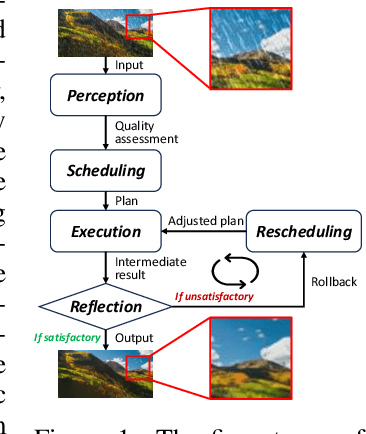
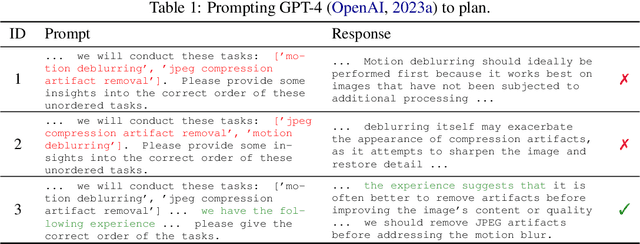
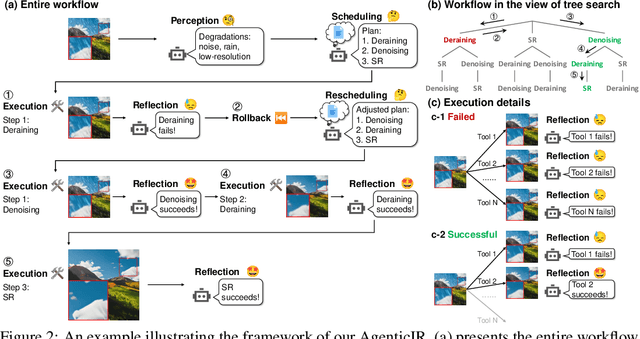
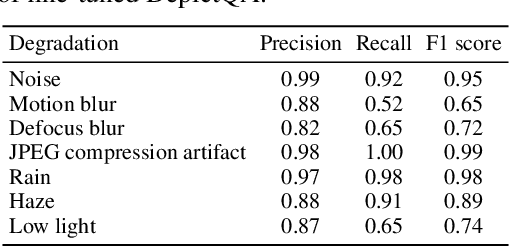
Abstract:Real-world image restoration (IR) is inherently complex and often requires combining multiple specialized models to address diverse degradations. Inspired by human problem-solving, we propose AgenticIR, an agentic system that mimics the human approach to image processing by following five key stages: Perception, Scheduling, Execution, Reflection, and Rescheduling. AgenticIR leverages large language models (LLMs) and vision-language models (VLMs) that interact via text generation to dynamically operate a toolbox of IR models. We fine-tune VLMs for image quality analysis and employ LLMs for reasoning, guiding the system step by step. To compensate for LLMs' lack of specific IR knowledge and experience, we introduce a self-exploration method, allowing the LLM to observe and summarize restoration results into referenceable documents. Experiments demonstrate AgenticIR's potential in handling complex IR tasks, representing a promising path toward achieving general intelligence in visual processing.
PhoCoLens: Photorealistic and Consistent Reconstruction in Lensless Imaging
Sep 26, 2024



Abstract:Lensless cameras offer significant advantages in size, weight, and cost compared to traditional lens-based systems. Without a focusing lens, lensless cameras rely on computational algorithms to recover the scenes from multiplexed measurements. However, current algorithms struggle with inaccurate forward imaging models and insufficient priors to reconstruct high-quality images. To overcome these limitations, we introduce a novel two-stage approach for consistent and photorealistic lensless image reconstruction. The first stage of our approach ensures data consistency by focusing on accurately reconstructing the low-frequency content with a spatially varying deconvolution method that adjusts to changes in the Point Spread Function (PSF) across the camera's field of view. The second stage enhances photorealism by incorporating a generative prior from pre-trained diffusion models. By conditioning on the low-frequency content retrieved in the first stage, the diffusion model effectively reconstructs the high-frequency details that are typically lost in the lensless imaging process, while also maintaining image fidelity. Our method achieves a superior balance between data fidelity and visual quality compared to existing methods, as demonstrated with two popular lensless systems, PhlatCam and DiffuserCam. Project website: https://phocolens.github.io/.
Interpreting Low-level Vision Models with Causal Effect Maps
Jul 29, 2024



Abstract:Deep neural networks have significantly improved the performance of low-level vision tasks but also increased the difficulty of interpretability. A deep understanding of deep models is beneficial for both network design and practical reliability. To take up this challenge, we introduce causality theory to interpret low-level vision models and propose a model-/task-agnostic method called Causal Effect Map (CEM). With CEM, we can visualize and quantify the input-output relationships on either positive or negative effects. After analyzing various low-level vision tasks with CEM, we have reached several interesting insights, such as: (1) Using more information of input images (e.g., larger receptive field) does NOT always yield positive outcomes. (2) Attempting to incorporate mechanisms with a global receptive field (e.g., channel attention) into image denoising may prove futile. (3) Integrating multiple tasks to train a general model could encourage the network to prioritize local information over global context. Based on the causal effect theory, the proposed diagnostic tool can refresh our common knowledge and bring a deeper understanding of low-level vision models. Codes are available at https://github.com/J-FHu/CEM.
 Add to Chrome
Add to Chrome Add to Firefox
Add to Firefox Add to Edge
Add to Edge